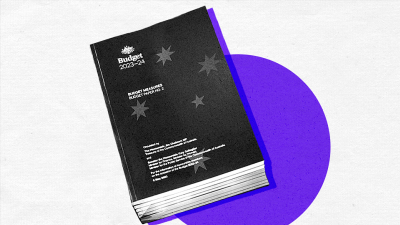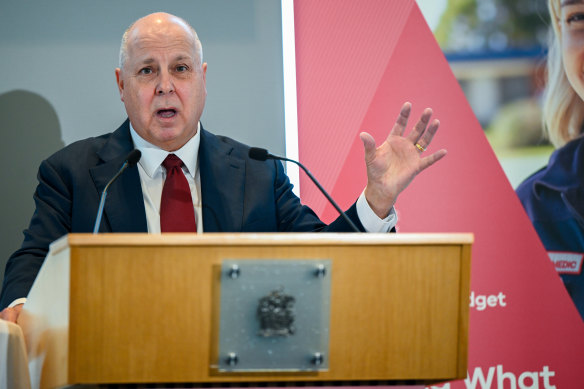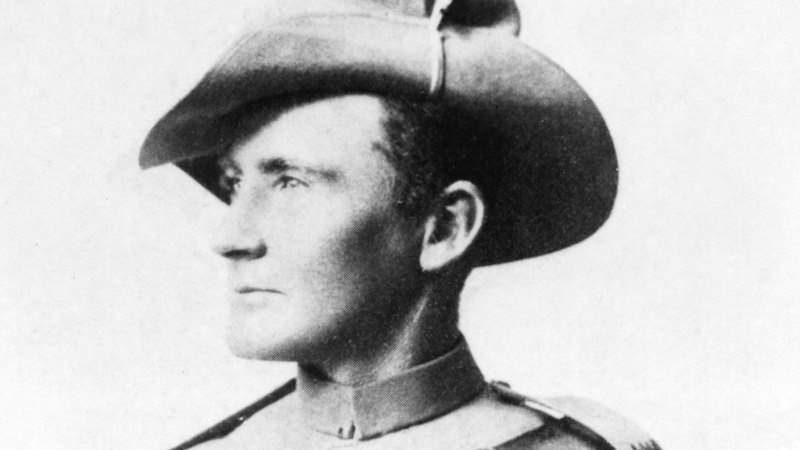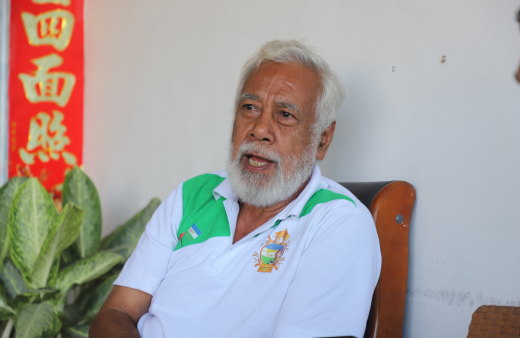Save articles for later
Add articles to your saved list and come back to them any time.
It’s easy to see why Treasurer Tim Pallas has described this – his ninth budget – as the most difficult he has had to deliver.
Faced with a sea of red, the government has taken the decision to slug landlords and employers with higher taxes and axe up to 4000 public servant jobs in an effort to pay off its soaring debt bill, much of which was racked up during COVID-19 lockdowns.
Victorian Treasurer Tim Pallas on Tuesday: “Small and medium-sized businesses will be the principal beneficiaries of these arrangements.”Credit: Joe Armao
Handing down the budget, Pallas was at pains to explain away the debt pain as simply the cost of keeping Victorians safe, making a distinction from debt accumulated before COVID-19, which he said was done to build, invest and grow the state.
With the Reserve Bank on the nose, the government is pointing the finger at its governor, Philip Lowe, who encouraged states to borrow cash to prevent “economic scarring” and long-term unemployment.
It’s also being pitched as the time for those that did well in the pandemic years – landlords and big businesses – to chip in and help the government pay the bills.
Politically, it is a smart strategy, as most Australians can relate to the impact rising interest rates are having on their own household budgets. It also plays into a bit of old-fashioned class warfare, with Pallas telling parliament “it’s only fair that those that did well contribute to the repayment effort”.
Having identified some “villains” to whack with tax hikes, the government hopes those impacted will simply pay their new tax bill and get on with it – with a little whinge on the way through.
Even with landlords and businesses chipping in more than $8 billion over the next four years, the government’s debt will continue to rise from $135.4 billion in 2023-24 to $171.4 billion by 2026-27 – or 24.5 per cent of the state’s economy.
In reality, the government had started racking up debt years before the pandemic hit, and higher taxes and public service cuts are the only option.
Short of paying down debt, the government is now hoping to keep up with interest payments on its record borrowing and "stabilise" its debt.
It's the sort of budget governments hope never to deliver, but if they are forced to, they tend to make these hard decisions after election wins, hoping that any pain will dissipate by the next time Victorians go to the polls.
However, with debt levels this high, the government might struggle to turn the tide by 2026.
Ahead of the budget, economists and business groups warned that any changes to payroll taxes could also have a flow on effect, with costs passed on to consumers already doing it tough amid a cost-of-living crisis.
If that's the case, the spin and blame might not be enough.
The Morning Edition newsletter is our guide to the day’s most important and interesting stories, analysis and insights. Sign up here.
Most Viewed in Politics
From our partners
Source: Read Full Article



